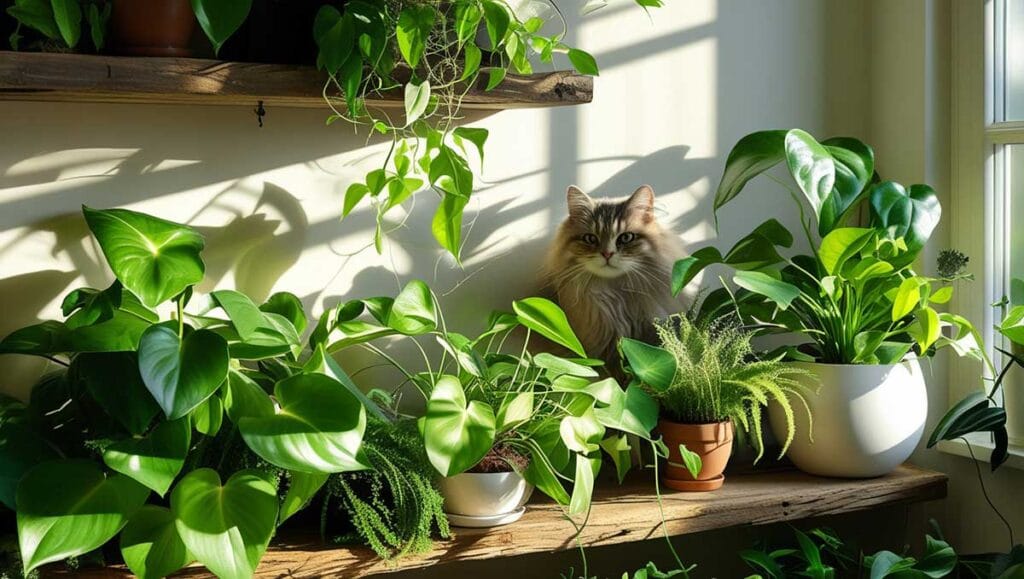When considering pet friendly houseplants for your home, it’s essential to understand the characteristics that make a plant non-toxic to animals. Certain plants contain compounds that can be harmful to pets if ingested. By opting for safe options like orchids and air plants, you can create a harmonious environment that balances beauty and safety. Explore the specific care needs and benefits of these plants, ensuring your home remains a haven for both flora and fauna.
What Makes a Plant Pet-Friendly?
When determining what makes a pet friendly houseplants, it’s crucial to take into account the plant’s toxicity level. You need to identify pet safe plants that are non-toxic and safe for cats and dogs.
First, research the plant’s botanical name and cross-reference it with reputable sources like the ASPCA’s toxic plant database. Plants such as spider plants, Boston ferns, and areca palms are excellent choices for households with pets. They’re recognized for their non-toxic properties and are safe for your furry friends.
Consideration of a plant’s chemical makeup is essential; some compounds can cause mild to severe reactions. Always verify that the plant’s physical characteristics, such as leaves or sap, won’t pose ingestion risks.
This meticulous approach guarantees a harmonious home environment.
Why are Some Plants Toxic to Pets?
Although plants can beautify your home, their biochemical composition often includes compounds that can be harmful to pets. Some plants are toxic to cats due to alkaloids, glycosides, or oxalates, which can cause adverse reactions if ingested.
These toxins may interfere with cellular functions or disrupt metabolic pathways, leading to symptoms like vomiting or lethargy. The ASPCA provides a thorough list of plants that are toxic to pets, assisting in identifying potential hazards.
Non-toxic plants, in contrast, lack such harmful compounds, making them safer choices for your living space. Understanding the biochemical diversity within plant species is essential for ensuring a pet-friendly environment.

What Indoor Plants are Safe for Dogs and Cats?
When selecting houseplants that are safe for pets, consider incorporating species like Orchids, Air Plants, Cat Palms, Chinese Money Plants, and Hoya varieties.
These plants are non-toxic to both dogs and cats, providing an ideal solution for maintaining a harmonious indoor environment.
Each of these species exhibits unique physiological characteristics, such as the epiphytic nature of Air Plants and the low toxicity profile of Hoyas, ensuring they coexist safely with your pets.
Orchid
Orchids, renowned for their elegant blooms and intricate structures, aren’t only enchanting but also pet-friendly, making them an excellent choice for households with cats and dogs.
As pet safe indoor plants, they thrive in environments with indirect light, ensuring that your furry companions remain unharmed while enhancing your home’s aesthetic.
To successfully cultivate orchids, consider these key aspects:
- Light: Position in a spot with bright, indirect light to simulate their natural habitat.
- Humidity: Maintain a humid environment, as orchids are native to tropical regions.
- Watering: Water sparingly, allowing the medium to dry between waterings.
- Temperature: Keep them in moderate temperatures, avoiding extreme fluctuations.
- Potting Medium: Use a well-draining, orchid-specific mix to prevent root rot.
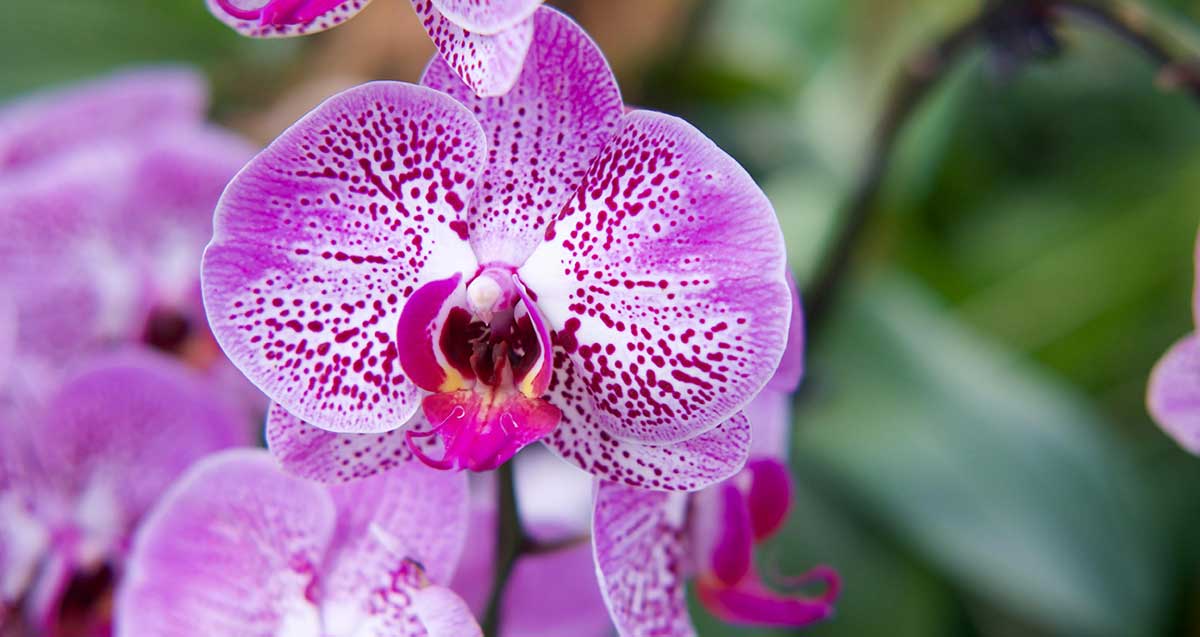
Air Plant
Air plants, scientifically known as Tillandsia, are unique epiphytes that don’t require soil to grow, making them an intriguing and pet-safe choice for your home.
These plants absorb moisture and nutrients through their leaves, which distinguishes them from traditional houseplants. When cultivating air plants, guarantee they receive indirect light, as direct sunlight can desiccate their foliage. You can place them in bright, filtered environments to mimic their natural habitat.
Hydration is critical; submerge them in water for 20-30 minutes weekly, allowing them to dry completely before returning them to their display.
As a pet owner, you’ll appreciate that air plants are non-toxic to both dogs and cats, providing a safe, verdant aesthetic without compromising your pets’ health.

Cat Palm
Moving from air plants to another pet-friendly option, the Cat Palm, known scientifically as Chamaedorea cataractarum, offers a lush, tropical appearance while remaining safe for both dogs and cats.
This species thrives indoors, making it an ideal choice for conscientious pet owners seeking pet friendly houseplants. Its non-toxic nature guarantees it’s safe for cats, allowing you peace of mind.
To cultivate a healthy Cat Palm, consider these key factors:
- Light: Prefers indirect, bright light; avoid direct sunlight.
- Watering: Keep soil consistently moist, but not waterlogged.
- Humidity: Benefits from high humidity; misting helps.
- Soil: Requires well-draining potting mix.
- Temperature: Thrives in temperatures between 65-80°F (18-27°C).
Understanding these conditions will help you maintain a vibrant, pet-friendly environment.

Chinese Money Plant
The Chinese Money Plant, scientifically known as Pilea peperomioides, is another excellent choice for pet-friendly households, guaranteeing safety for both dogs and cats.
This plant, characterized by its round, coin-shaped leaves, is a popular non-toxic plant for pets, making it ideal for your living space. When you incorporate Pilea into your home, it not only enhances aesthetic appeal but also maintains a safe environment for your furry friends.
As a pet safe houseplant, it thrives in bright, indirect light and requires minimal watering, promoting sustainability with ease of care.
Its compact size allows for versatile placement, whether on shelves or window sills. Integrating these pet friendly plants into your home guarantees a harmonious balance between botanical beauty and pet safety.
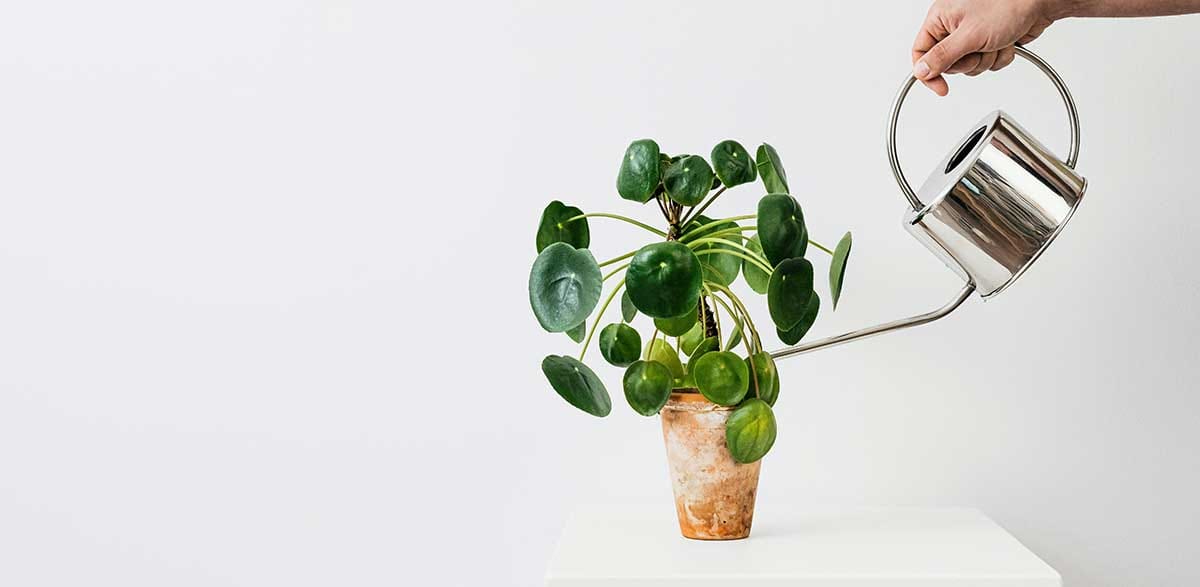
Hoya Varieties
When seeking pet-friendly houseplants, Hoya varieties stand out as a safe and aesthetically pleasing option for both dogs and cats.
These non-toxic indoor plants thrive with minimal maintenance and are ideal for spaces with indirect light. The waxy, succulent-like leaves not only add texture but also require less frequent watering, making them perfect for busy individuals.
Consider these benefits of Hoya varieties:
- Non-toxic: Safe for households with pets, eliminating worry over accidental ingestion.
- Light adaptability: Prefers indirect light, thriving in various indoor environments.
- Low water requirement: Reduces the risk of overwatering, a common issue with houseplants.
- Aesthetic appeal: Unique foliage and potential for fragrant flowers enhance any room.
- Durability: Hardy nature makes them resilient to common indoor challenges.
Incorporate Hoyas for a practical and elegant pet-friendly home.

Rattlesnake Plant
Although often overshadowed by more popular choices, the Rattlesnake Plant (Calathea lancifolia) is a remarkable pet-friendly option that combines safety with visual intrigue.
Known for its striking foliage, this pet-safe plant features elongated, wavy leaves adorned with dark green spots resembling a rattlesnake’s pattern. It’s non-toxic to both dogs and cats, making it an ideal choice for households with curious pets.
To thrive, the Rattlesnake Plant demands a specific care regimen. It prefers indirect light, as direct sunlight can scorch its delicate leaves. Maintain high humidity levels and guarantee well-draining soil to prevent root rot.
Regularly mist the leaves to replicate its native tropical environment. By following these guidelines, you can enjoy a safe and vibrant home for both your plants and pets.

Spider Plant
In the domain of pet-friendly houseplants, the Spider Plant (Chlorophytum comosum) stands out as an iconic choice for pet owners.
Renowned for being non-toxic to both dogs and cats, this plant offers a perfect blend of aesthetic appeal and safety. Its robust and adaptable nature makes it an exemplary choice for novices and seasoned plant enthusiasts alike.
Here’s why the Spider Plant should be your go-to for non-toxic indoor plants:
- Non-toxic: Safe for curious pets.
- Easy to care: Thrives in indirect sunlight and moderate watering.
- Air purifier: Known for its ability to improve air quality.
- Propagation: Easily propagated through offsets or “pups.”
- Visual appeal: Variegated leaves add a touch of elegance.
Integrating this plant into your home guarantees a harmonious coexistence with your furry friends.

Baby Rubber Plant
The Baby Rubber Plant (Peperomia obtusifolia) is an excellent pet-friendly houseplant choice, combining safety with visual allure. As a member of the Piperaceae family, it showcases thick, glossy leaves, making it a perfect addition to your interior decor.
Importantly, it’s non-toxic to dogs and classified as cat safe, ensuring peace of mind when your pets roam freely.
In terms of care, Peperomia obtusifolia thrives in indirect light and tolerates lower humidity, making it adaptable to various indoor environments. It’s a drought-tolerant species, so don’t overwater—let the soil dry between waterings.
This resilient plant is an ideal candidate when considering pet friendly indoor plants. With its compact growth habit, it can fit seamlessly into small spaces, enhancing your home’s aesthetic without compromising your pets’ safety.
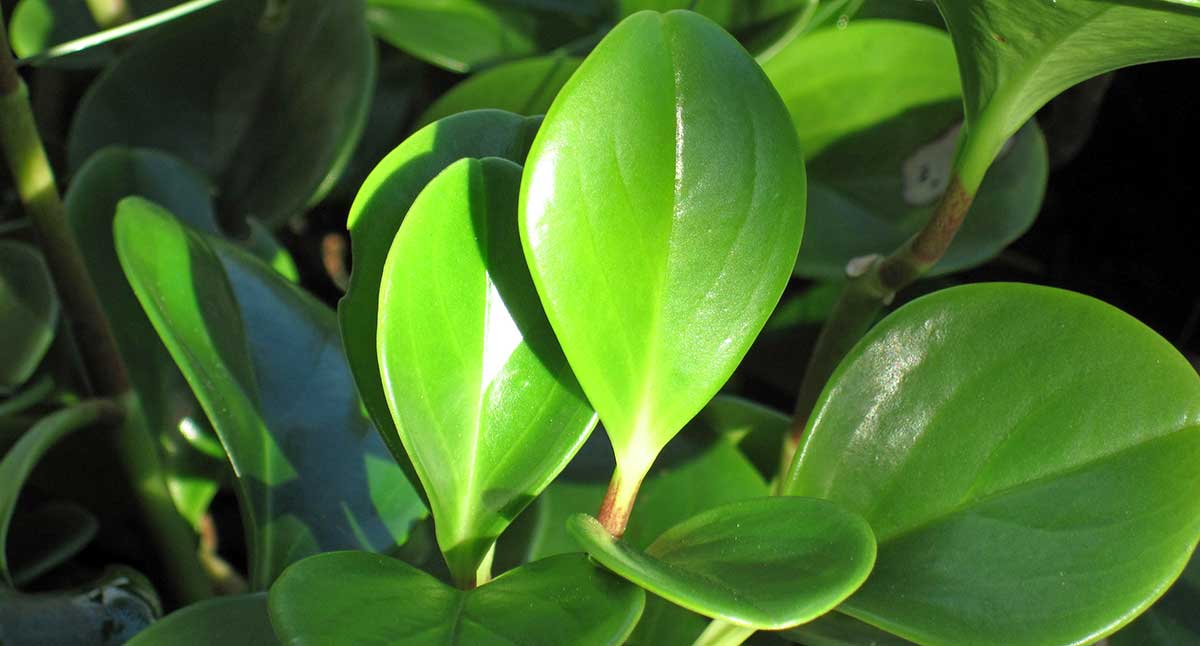
African Violet
When considering pet-friendly houseplants, African Violets (Saintpaulia) shine as a beautiful and safe option for homes with cats and dogs.
These pet-friendly plants thrive in environments with indirect light, making them perfect for indoor settings. Their vibrant blooms add aesthetic appeal while guaranteeing your furry friends remain unharmed.
To cultivate African Violets successfully, focus on the following key elements:
- Lighting: Place them in a location with bright, indirect light to mimic their natural habitat.
- Watering: Use room temperature water and avoid getting leaves wet to prevent leaf spots.
- Humidity: Maintain moderate humidity levels to support ideal growth.
- Soil: Utilize well-draining, African Violet-specific potting mix for best results.
- Fertilization: Apply a balanced, water-soluble fertilizer monthly to sustain healthy blooms.
These guidelines guarantee African Violets flourish without compromising pet safety.

Prayer Plant
African Violets provide a perfect blend of beauty and safety for pet owners, and the Prayer Plant (Maranta leuconeura) offers another excellent choice.
As a pet-safe houseplant, the Prayer Plant is non-toxic to both dogs and cats, allowing you to create a harmonious environment without worry. Its variegated leaves, which fold upwards at night resembling praying hands, are a fascinating feature.
Make sure you place your Prayer Plant in a location receiving indirect sunlight to prevent leaf scorch and maintain vibrant foliage. Ideal growth occurs when humidity levels are high, so consider misting regularly.
Additionally, keep the soil consistently moist but not waterlogged. By understanding these care requirements, you can enjoy the lush beauty of a Prayer Plant while keeping your pets safe.
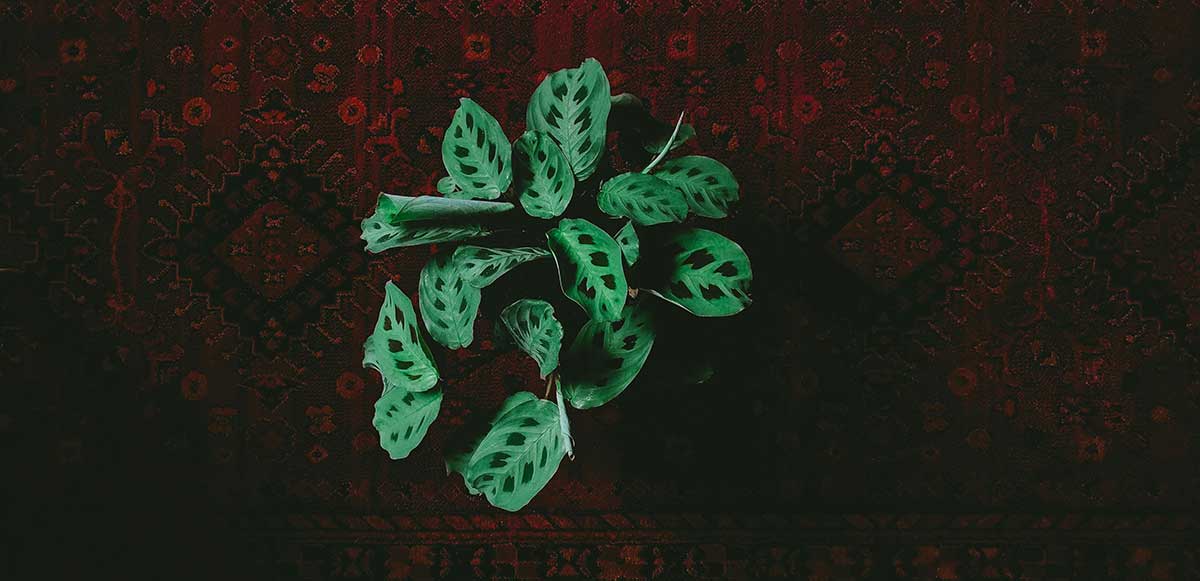
Baby’s Tears
Although often overlooked, Baby’s Tears (Soleirolia soleirolii) is a stellar choice for pet owners seeking a non-toxic indoor plant.
This lush, cascading houseplant isn’t only aesthetically pleasing but also pet safe, guaranteeing your curious dogs and cats remain unharmed.
Baby’s Tears thrive in indirect light and consistently moist soil, making them ideal for indoor environments.
Their dense foliage creates a lush carpet-like appearance, adding a touch of elegance to any room.
Consider the following attributes:
- Pet Safe: Non-toxic to dogs and cats.
- Light Requirements: Prefers indirect sunlight.
- Watering Needs: Requires consistently moist soil.
- Growth Habit: Creeping, dense foliage.
- Aesthetic Appeal: Elegant, carpet-like texture.
Understanding these characteristics guarantees Baby’s Tears can seamlessly integrate into your pet-friendly home.

Boston Fern
If you’re searching for a houseplant that’s both attractive and safe for your pets, the Boston Fern (Nephrolepis exaltata) is an excellent choice. This fern’s finely divided fronds add a lush, verdant aesthetic to any space while ensuring a non-toxic environment for your furry companions.
As an epiphytic species, the Boston Fern thrives in humid conditions, mimicking its natural habitat. It’s essential to maintain moisture by misting the plant regularly or placing it on a pebble tray with water.
The plant’s preference for indirect light makes it ideal for indoor settings. With its ability to improve air quality by filtering pollutants, the Boston Fern not only beautifies your home but also contributes to a healthier living environment, all while being safe for your pets.
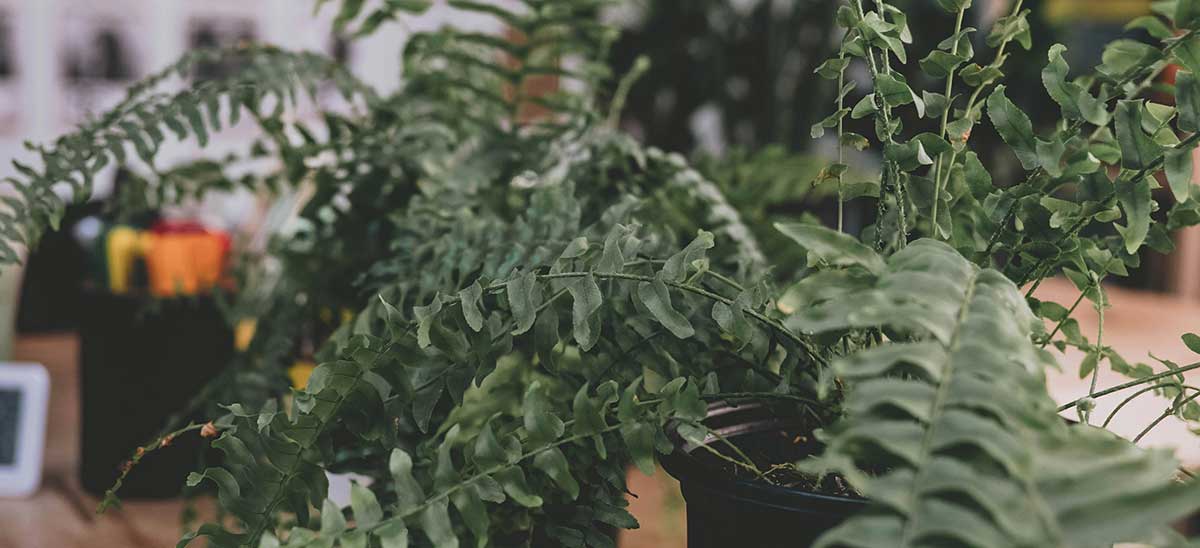
Bromeliad
When selecting houseplants that are safe for both dogs and cats, consider the Bromeliad family, known for its striking appearance and pet-friendly nature.
These vibrant plants thrive under specific conditions, making them a perfect addition to your home. Bromeliads prefer indirect bright light, ensuring their colorful foliage remains vibrant without the risk of sunburn.
To maintain a healthy bromeliad, focus on these care essentials:
- Light: Place in a spot with indirect bright light for ideal growth.
- Water: Keep the central cup filled, but avoid overwatering the soil.
- Humidity: High humidity levels are beneficial.
- Temperature: Maintain temperatures between 60-80°F.
- Soil: Use a well-draining potting mix to prevent root rot.
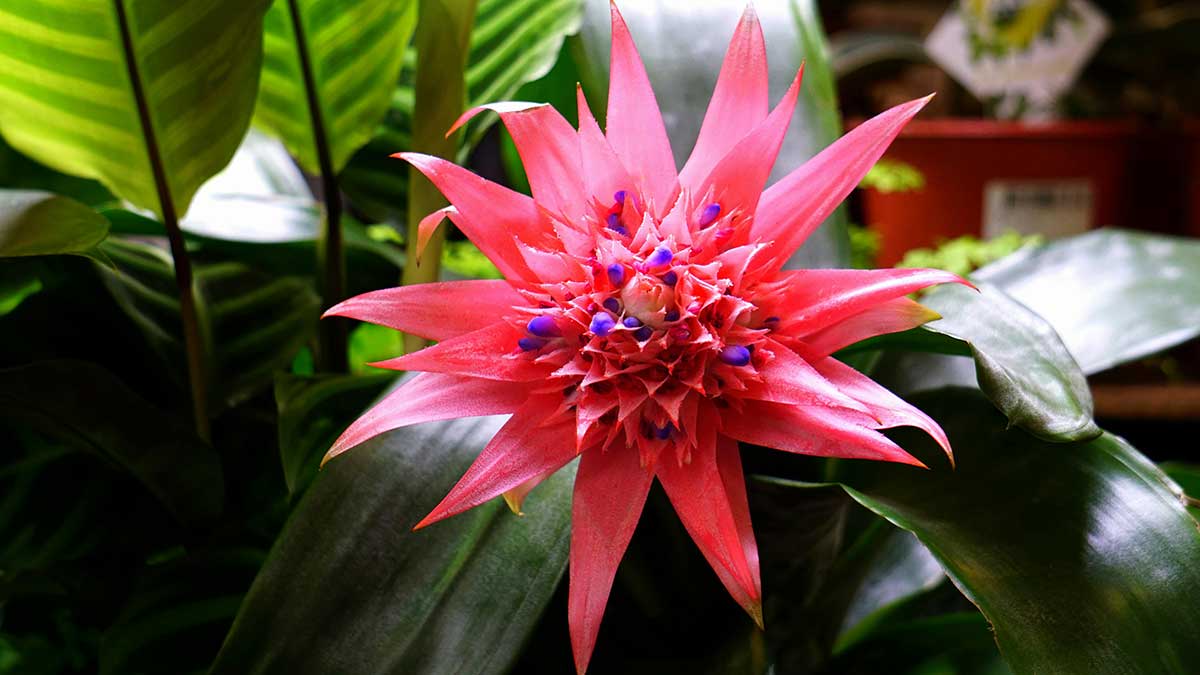
Conclusion
In nurturing a pet-friendly indoor garden, you’re not just decorating; you’re crafting a safe haven where plants and pets coexist in harmony. By selecting non-toxic gems like orchids and air plants, you shield your pets from hidden dangers. Remember, it’s all in the details—understanding each plant’s light and watering needs is key. Like conducting a symphony, your careful orchestration of plant care guarantees a vibrant, pet-safe environment, where every leaf and paw thrives in concert.

